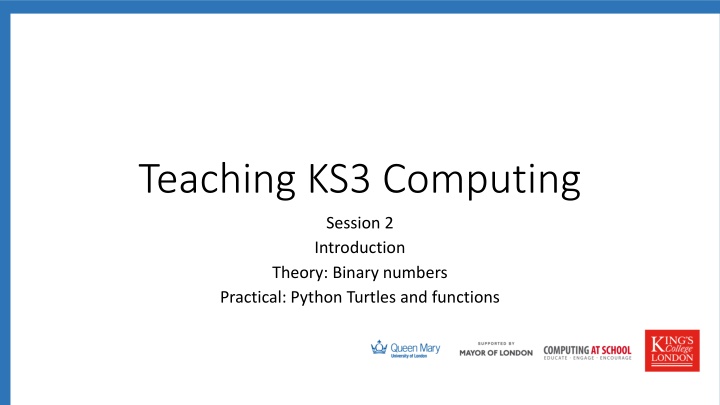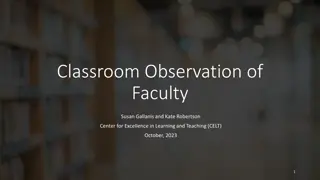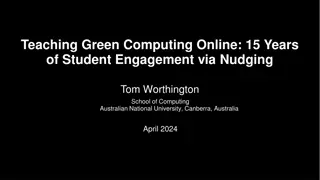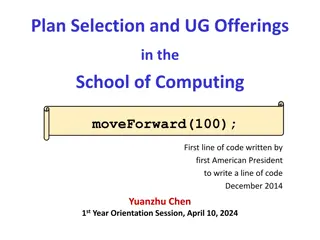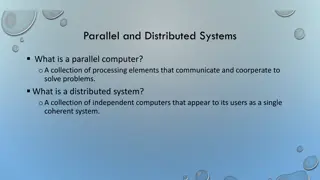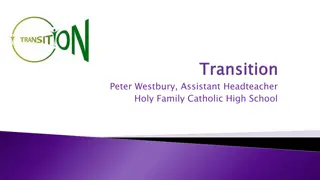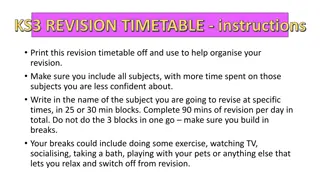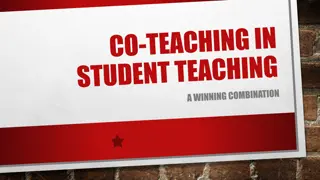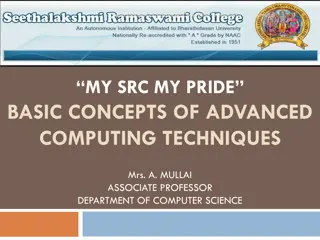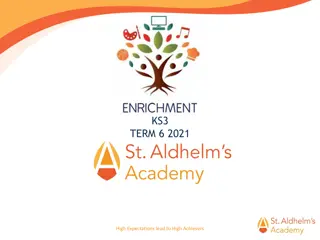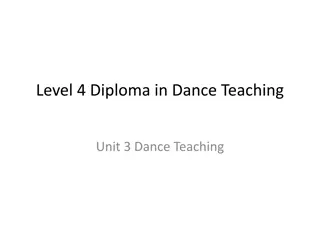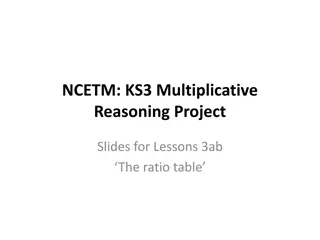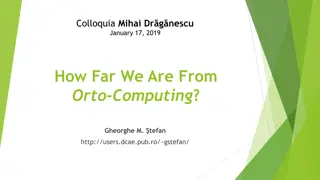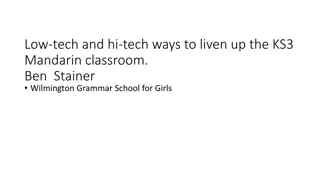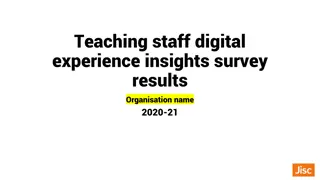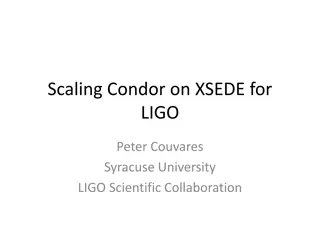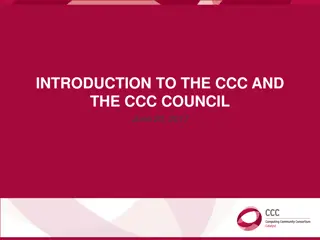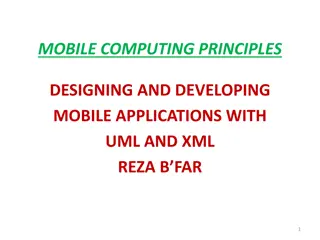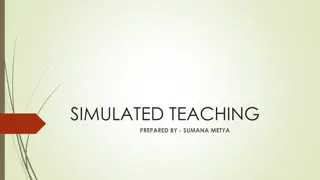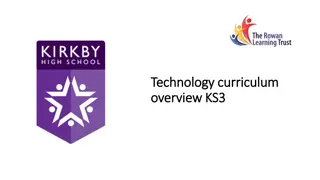Teaching KS3 Computing
Today's session covers binary numbers, teaching how they are represented, and enabling students to perform binary-to-decimal conversions with practical examples and activities. Explore binary counting exercises, conversion techniques, and practice exercises to enhance understanding. Activities include counting in binary, converting binary to denary, and more. Interactive sessions use Python Turtles and functions for hands-on learning. Discover ways to teach and practice binary conversions through activities like Binary cards, online games, and CS Unplugged exercises.
Download Presentation

Please find below an Image/Link to download the presentation.
The content on the website is provided AS IS for your information and personal use only. It may not be sold, licensed, or shared on other websites without obtaining consent from the author.If you encounter any issues during the download, it is possible that the publisher has removed the file from their server.
You are allowed to download the files provided on this website for personal or commercial use, subject to the condition that they are used lawfully. All files are the property of their respective owners.
The content on the website is provided AS IS for your information and personal use only. It may not be sold, licensed, or shared on other websites without obtaining consent from the author.
E N D
Presentation Transcript
Teaching KS3 Computing Session 2 Introduction Theory: Binary numbers Practical: Python Turtles and functions
From the national curriculum At KS3, students should be able to: understand how numbers can be represented in binary, and be able to carry out simple operations on binary numbers [for example, binary addition, and conversion between binary and decimal]
Todays session 5:00 6:00 Binary numbers converting between denary and binary 6.00 7.00 More Python and Turtles
How to convert Binary Numbers to denary Place values 16 8 4 2 1 1 0 1 0 0 0 + 8 + 0 + 2 + 0 = 10 in Denary
Converting binary to denary Another example: Convert the binary number 1011 0111 into denary: Answer 128 1 128 +32 +16 +4 +2 +1 = 183 64 0 32 1 16 1 8 0 4 1 2 1 1 1
Activity 2: Conversion Exercise Convert the following binary numbers into denary: 0 0 1 0 1 0 1 0 0 0 1 0 0 1 1 0 1 1 1 0 1 0 1 0 1 1 1 1 1 1 0 0 1 0 1 0 1 1 0 1 1 1 1 1 1 1 1
Activity 2: Conversion Exercise Convert the following binary numbers into denary: 0 0 1 0 1 0 1 0 0 0 1 0 0 1 1 2 8 9 1 0 1 1 1 0 1 0 1 0 1 1 1 1 5 6 10 15 1 1 0 0 1 0 1 0 1 1 0 1 1 1 1 1 1 1 1 12 21 23 31
Teaching and practicing binary conversions Binary cards Online binary cards Finger binary Code.org binary game CS Unplugged activities
Addition Rules for Binary 0 + 0 = 0 1 + 0 = 1 0 + 1 = 1 1 + 1 = 10 1 + 1 + 1 = 11 (write down 0 and carry 1) (write down 1 and carry 1)
Adding Binary Numbers Task: add 8 and 5 8 5 13 1 0 0 0 0 1 0 1 ---------------- 1 1 0 1 check the answer using place values: 8+4+0+1 = 13
Adding Binary Numbers Task: add 9 and 5 9 5 1 0 0 1 0 1 0 1 ---------------- 1 1 1 carry 14 0 1 Check the answer using place values: 8+4+2+0 = 14
16 of 19 Binary Addition Exercise Sheet Q1 001 010 1000 1001 +100 +110 +1010 +1111 101 1000 1+4=5 2+6=8 Q2 Q3 Q4 10010 8+10=18 11000 9+15=24 Q5 Q6 101 110 +1101 +10101 10010 5+13=18 11011 6+21=27 IM Binary Addition and Multiplication
17 of 19 Binary Addition Exercise Sheet Q7 Q8 Q9 1010 1111 11001 +10111 +11111 +10111 100001 101110 10+23=33 15+31=46 110000 25+23=48 IM Binary Addition and Multiplication
18 of 19 Binary Addition Exercise Sheet Q10 Q11 Q12 1010 1001 11001 1011 1001 10110 +10100 +11111 +10111 101001 110001 1000110 IM Binary Addition and Multiplication
Summary why teach binary? Binary is a set of instructions used to control the computer, and works with 1s and 0s The computer understands them as on or off signals. If the decimal system were used, there would need to be 10 different voltages, in which case there'd be more room for error with resistors etc., and therefore more room for corruption of data. Today, the elementary building block for all modern computer systems is the transistor. A transistor is simply a switch, much like the light switch mentioned earlier. A transistor can be in an off state, which does not allow electricity to flow, or in an on state, in which electricity can pass unimpeded. A transistor is a solid-state device that has no mechanical or moving parts. The switching of a transistor from the off state to the on state, or vice versa, is done electronically rather than mechanically. This allows it to be fast as well as extremely small. So learning binary helps students to understand how a computer works
Break Next week we will look at other uses of binary numbers After break we will continue with programming in Python
